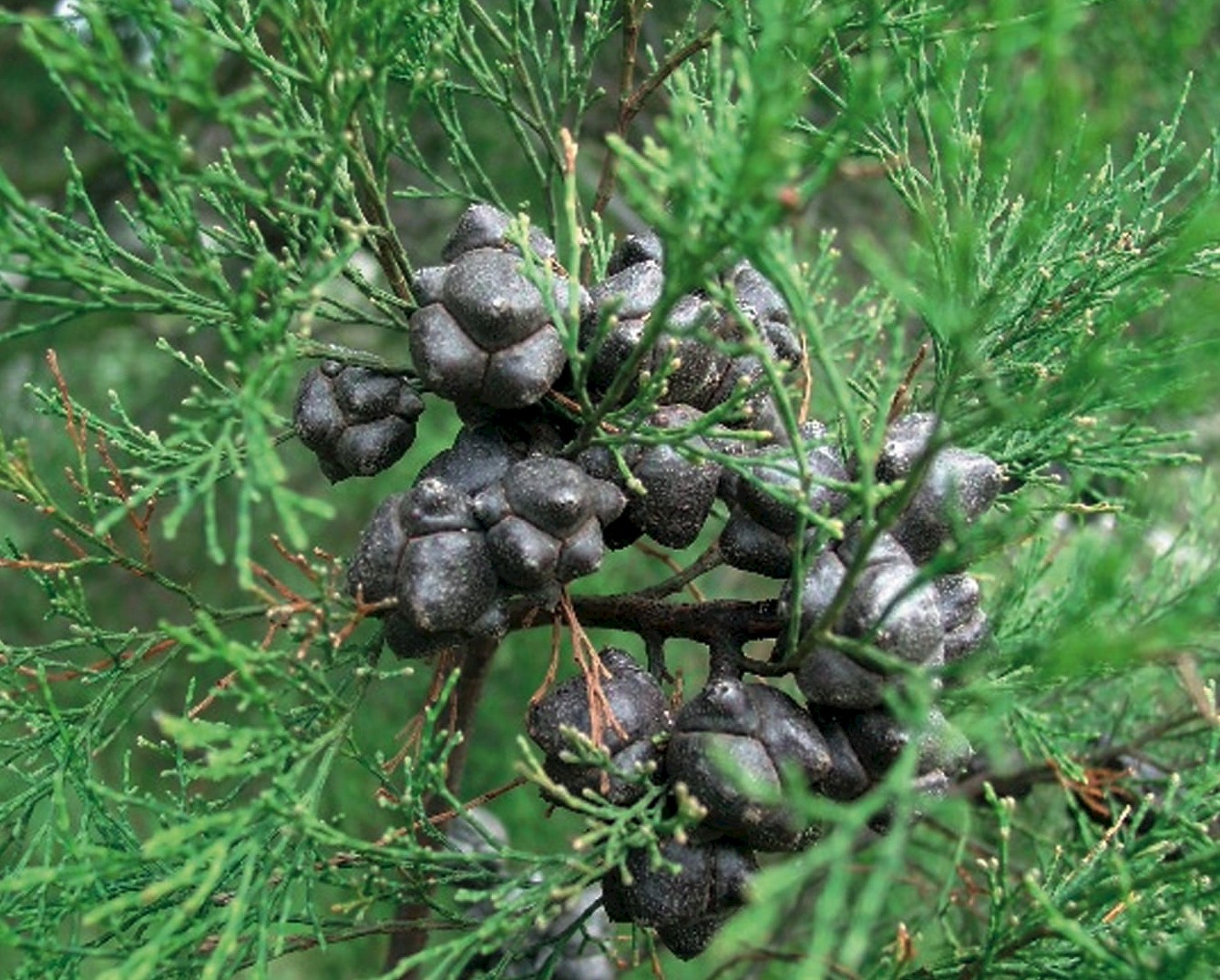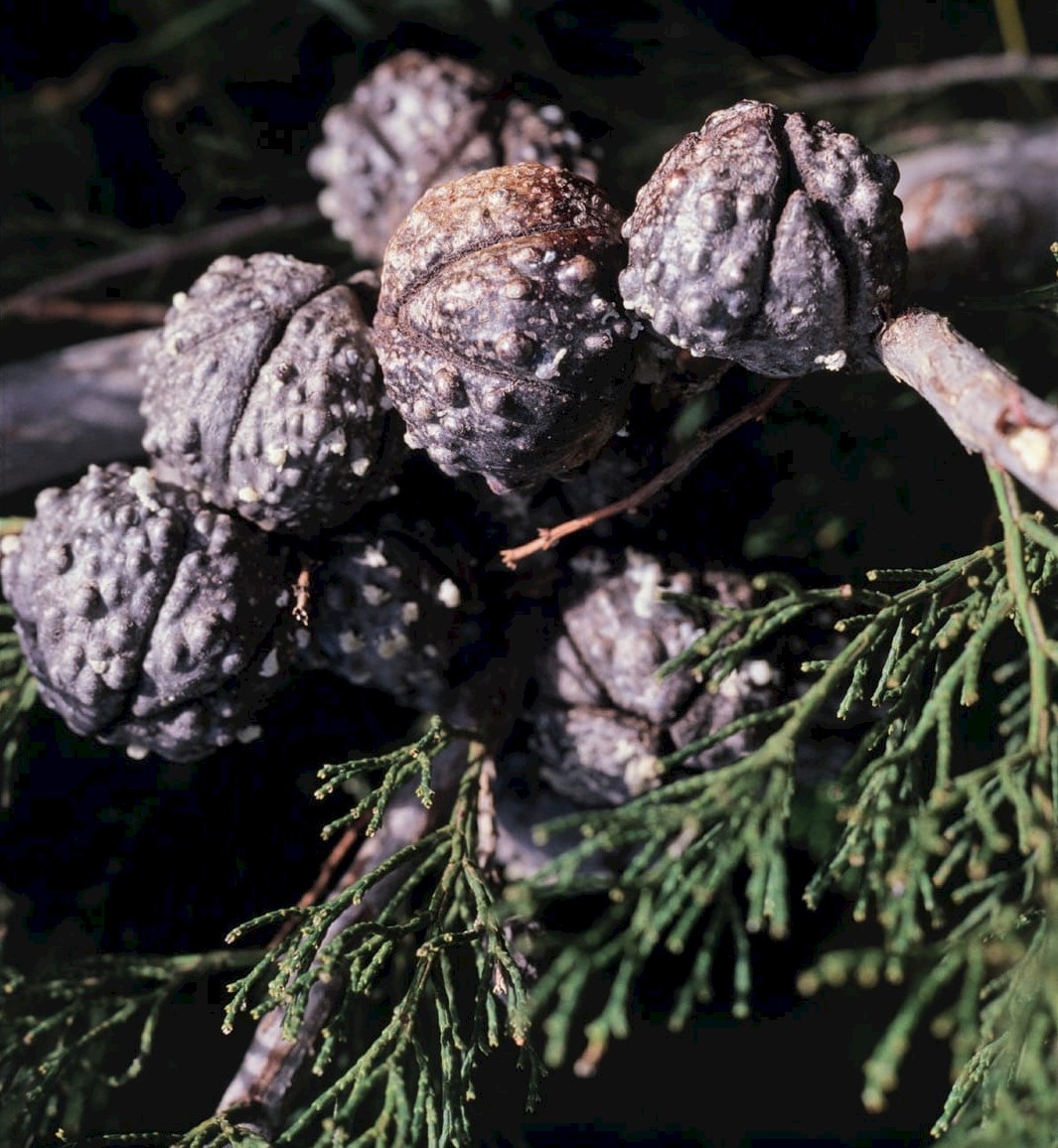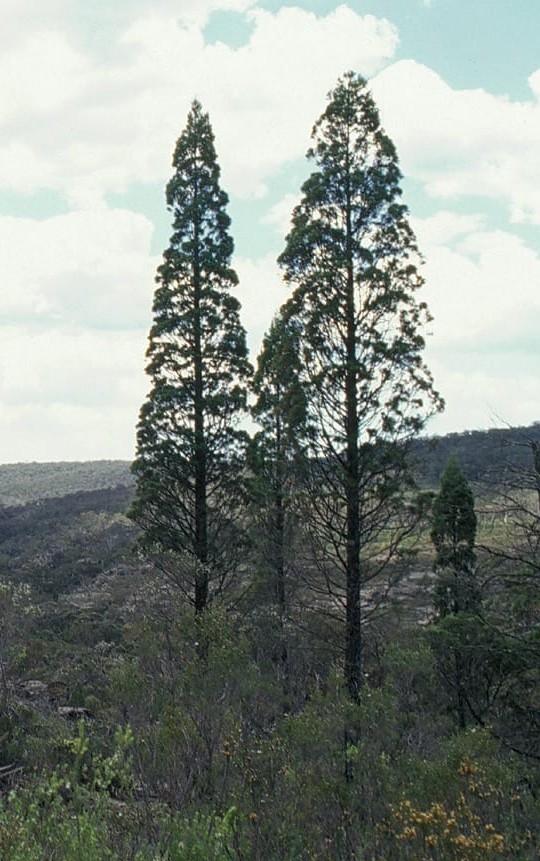Callitris
Credits
Article from New Trees by John Grimshaw & Ross Bayton
Recommended citation
'Callitris' from the website Trees and Shrubs Online (treesandshrubsonline.
Family
- Cupressaceae
Common Names
- Cypress Pines
Callitris is an important genus of coniferous trees or shrubs in Australia, where there are 17 species, with a further two endemic to New Caledonia. The first part of the name is derived from the Greek kallos, ‘beauty’, which is appropriate for the fine branchlets usually found in the genus (tris is of uncertain derivation, possibly corrupted from trichos, ‘hair’, or treis in allusion to the trimerous phyllotaxis). Although some species attain timber size, the majority are smaller, with erect or fastigiate to spreading branches. As usual in Cupressaceae, the leaves exhibit dimorphism – in the juvenile phase being needle-shaped and held in whorls of four, spreading away from the stem, then rapidly replaced by the much smaller adult leaves, which are decurrent on the stem for most of their length, showing only a small triangular free tip, and borne in alternating whorls of three. The male strobili are solitary, paired or clustered at the tips of short branches, and are formed of alternating trimerous whorls of scales. Each scale bears two to six microsporangia on its inner surface. The female cones are solitary or clustered, formed of two whorls of three fertile scales, each bearing one to eight ovules. The seeds are winged.
In Australia Callitris is regarded as a horticulturally desirable genus, tolerant of harsh conditions and often growing rapidly. In the wild most occur in dry sites, and in gardens full sun and unimpeded drainage are essential; most species are said to be very tolerant of frosts (Elliot & Jones 1997). As yet, the genus may be little known in our area, but these qualities are apparent in the few specimens seen in research for the current work, which seem to be very adaptable to northern temperate conditions. Elliot and Jones (1997) offer one very valuable point of cultural advice, as applic able elsewhere as in Australia: Callitris are irresistible to rabbits! Several other species are described by Krüssmann (1985b), but are not known to be cultivated within our area. Callitris species are most easily propagated from seed.



